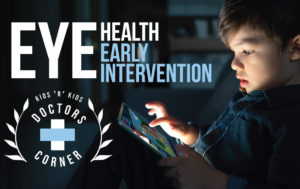
We rely on technology and devices to help us with lots of things: research, entertainment, staying in touch with loved ones, and more. Something those devices aren’t great for? Eye health. Experts predict that by 2050, half of the world’s population will be affected with myopia, commonly known as nearsightedness. This is especially concerning for young children. Pediatric diagnoses are on the rise, and it looks like screens are a major culprit. How can parents make sure their kids are seeing clearly? Early intervention is key!
A Closer Look
Nearsightedness occurs when the shape of the eye lengthens, usually beginning in childhood and getting worse through adolescence, weakening distance vision. While genetics and other factors contribute to myopia, specialists attribute the dramatic rise in kids’ vision problems to lack of natural light and excessive screen time.
Optometry Options
Children with nearsightedness may wear soft contact lenses as part of their treatment, which gently correct distance vision and slow myopia progression. Another newer treatment option available to some pediatric patients is the use of low-dosage atropine eye drops. While atropine has been commonly used to treat adult myopia, these new lower concentrations have far fewer side effects for children. For advanced myopia, most patients depend on prescription glasses.
20-20-20 Vision
A simple exercise to protect your children’s vision from excessive stress is the 20-20-20 rule. According to optometrists, kids (and adults!) should practice looking away from their screen or book every 20 minutes, for 20 seconds, focusing on something 20 feet away. This gives the eyes a chance to rest and reset.
Keep an Eye on the Problem
If you’ve noticed your child squinting or sitting unusually close to what they’re watching, as their pediatrician about an eye exam. Vision problems can generally be detected during a standard vision test in the office, and, if necessary, the doctor can refer your family to an optometrist for treatment.